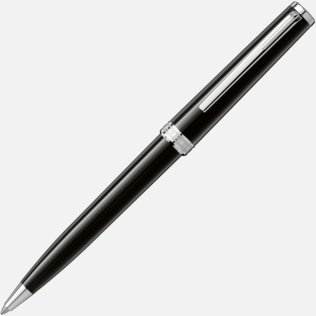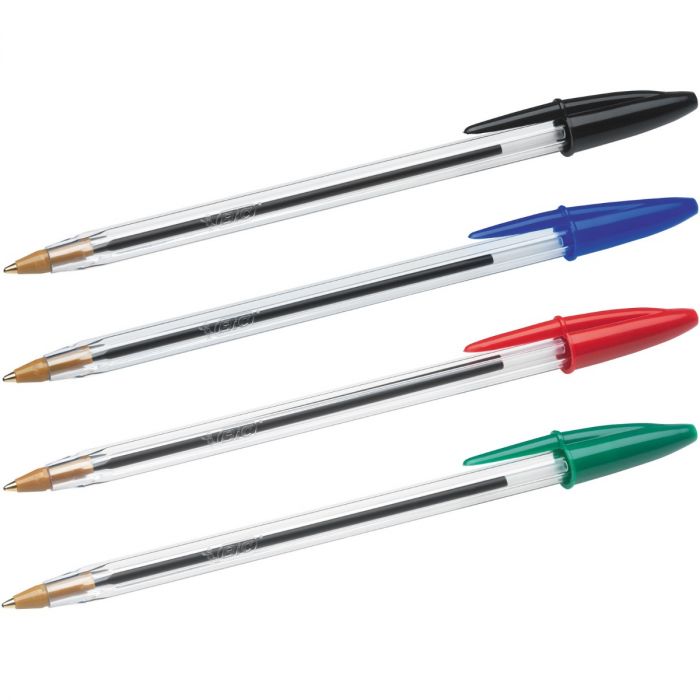When the Gimbels department store fielded a new type of fountain pen on this day seventy-five years ago, a revolution in writing was started.

The ballpoint was in its way as life-changing as the cell-phone which came forty years later. For the first time, it was possible to write anywhere, on all sorts of surfaces, without all the paraphernalia and mess that accompanied the traditional, often leaky fountain pen with its fragile nib.
On this day in 1945, the Reynolds International Pen Company set the world alight with its expensive new-fangled device. Gimbals sold 30,000 of the new pens within the week, despite the asking price of $12.50, now equivalent to around $175.
The story of the ballpoint pen goes back much further, though, right back to 1888 when American John Loud patented the idea of a pen with a captive ball instead of a nib. And the man normally credited with its invention, Hungarian-Argentinian László Bíró, had production models in circulation before the War.
Price was a big disincentive in these early years and it was left to a Frenchman, Marcel Bich, to put the seal on the writing revolution. His brainwave was the disposable pen which cost around 1/50th of a traditional ballpoint with a replaceable refill. The BIC conquered the world.


I teach mathematics at university; while there are very high quality math typesetting systems, none is as fast as pencil and paper. Reviewing student work on a recent latest exam, I have to say my students can produce very well-written work.
There is a caveat: students entering a competitive university and taking advanced mathematics are perhaps not a representative sample.
And just as you both have noted, there are differences in notation amongst students educated ‘East of Suez’, Africa and the Mideast: even though mathematics supposes itself to be universal.
Good point, Kathy, I hadn’t considered this aspect and was thinking exclusively of run-of-the-mill journals, letters and suchlike.
Very interesting history, penmanship is a rare skill these days; especially with the younger generation who are so used to phones and tablets. I was born in an European colony and spent my childhood there through elementary school, handwriting was part of my education since kindergarten. After immigrated to the US, I was surprised to see many kids having very poor handwriting skills. Many of my English teachers were amazed to see my handwriting which is better than many Americans. It is sad to see our future generations will likely not know what penmanship is and many will not even know to write with a pen anymore. Technology has brought many good things to our society but it also gradually takes our identity away!
Yours Truly,
Patrick
This is very true, Patrick, and a great pity. My generation was probably the last to rely almost entirely on handwriting, apart from the typewriter which was largely seen as for business only.
You mention the difference in handwriting between British (and by extension at the time, areas such as Hong Kong) and American handwriting. There is a distinct difference which is often very easy to distinguish. I’ve never quite understood this but it just be something to do with the teaching aides used at an early age.
Mike,
I was born in Macau which was a Portuguese colony but the education system was very similar to Britain/Hong Kong back then. I have been trained to write in script since kindergarten, which I still do today whenever I need to hand write something. Most schools in the US, from kindergarten to college never teach writing in script and do not train in penmanship either even back in the 80s and 90s. In fact, many youngsters had never seen writings in script before. Nowadays, they know about script because it is part of the font choices in word processing software such as MS Words. What an irony!
Yes, I suppose in the future the concept of handwriting will be thought odd. Even now it is often quicker to take a note on a smartphone than to find paper and pen. In fact, I always used to carry a notebook and pen but seldom do now. Another odd thing that has happened in my lifetime is universal familiarity with the QWERTY keyboard. When I was young, only trained typists could produce quick and accurate copy on the typewriter and almost all men (other than, for instance Journalists) were unable to use a keyboard. Every executive had a secretary sitting in an outer room; or junior executives would dictate to a typist from the pool. Suddenly, with the arrival of the computer, almost everyone became competent with the QWERTY keyboard and most young people can type at speed and with accuracy. Sadly, though, they seldom write by hand and the skill is dying.
I know several Leicafistas who also have an interest in fine pens or watches. In my case it’s an Italian pen (Montegrappa) and it happens to be a ball-point. Basically, any beautifully made mechanical object.
I won’t confess to excessive fondling of my M, but I love the Montegrappa too. And, unlike the BIC, it is certainly not disposeable!
You have a point. Apart from fine cameras, in have a love of fountain pens, fine notebooks and classic typewriters. There must be a connection somewhere because I know of many others who share these interests.
Intelligent innovation, it’s what seems to separate us from the other life forms on this planet. I would how much BIC plastic has ended up in our oceans. A sad fact is we can be so forward thinking, without considering the full consequences of our actions.
I would what new ideas will spring up in the coming years, once we have a solution the new viral invader.
Our world never stands still.